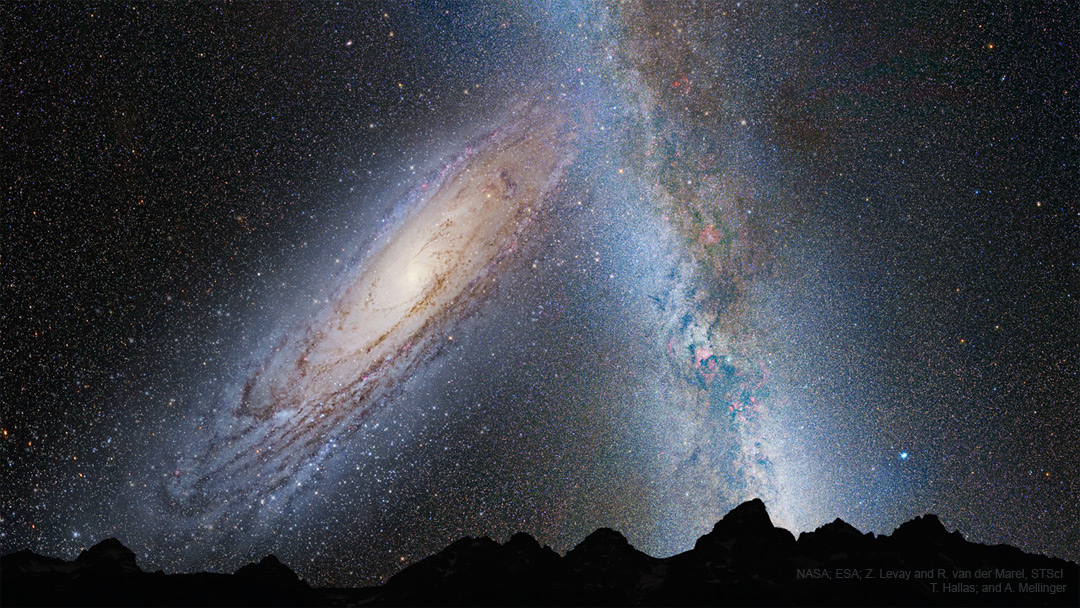2022年6月6日
Milky Way Galaxy Doomed: Collision with Andromeda Pending
Image Credit: NASA, ESA, Z. Levay and R. van der Marel (STScI); T. Hallas; and A. Mellinger
Explanation: Will our Milky Way Galaxy collide one day with its larger neighbor, the Andromeda Galaxy? Most likely, yes. Careful plotting of slight displacements of M31’s stars relative to background galaxies on recent Hubble Space Telescope images indicate that the center of M31 could be on a direct collision course with the center of our home galaxy. Still, the errors in sideways velocity appear sufficiently large to admit a good chance that the central parts of the two galaxies will miss, slightly, but will become close enough for their outer halos to become gravitationally entangled. Once that happens, the two galaxies will become bound, dance around, and eventually merge to become one large elliptical galaxy — over the next few billion years. Pictured here is a combination of images depicting the sky of a world (Earth?) in the distant future when the outer parts of each galaxy begin to collide. The exact future of our Milky Way and the entire surrounding Local Group of Galaxies is likely to remain an active topic of research for years to come.
Tomorrow’s picture: altar of dragons
银河系的末日:将与仙女座星系互撞
影像提供: NASA, ESA, Z. Levay and R. van der Marel (STScI); T. Hallas; and A. Mellinger
说明: 有一天,我们银河系会和比它大的邻居仙女座星系撞成一团吗?很可能。分析哈勃太空望远镜最近为M31所拍摄的影像,并仔细绘出M31的恒星相对于背景星系的微小位移之后,发现M31会笔直撞上我们银河系的中心。尽管推测会如此,但侧向速度的误差相当大,以至于这二个星系中心很可能会擦身而过,然而因为间距很近,届时它们的外晕会发生重力纠缠。一旦出现这个状况,在接下来的数十亿年之中,这两个被重力束缚在一起星系将相互旋绕,最后合并成一个大椭圆星系。这幅由画家所绘的组合图示,呈现在遥远的未来当这二个星系的外围开始互撞后,在某颗行星(地球?)的天空中或许会见到的景观。我们银河系及本星系群 的未来到底会如何,将来会持续是热门的研究课题。
明日的图片: altar of dragons







